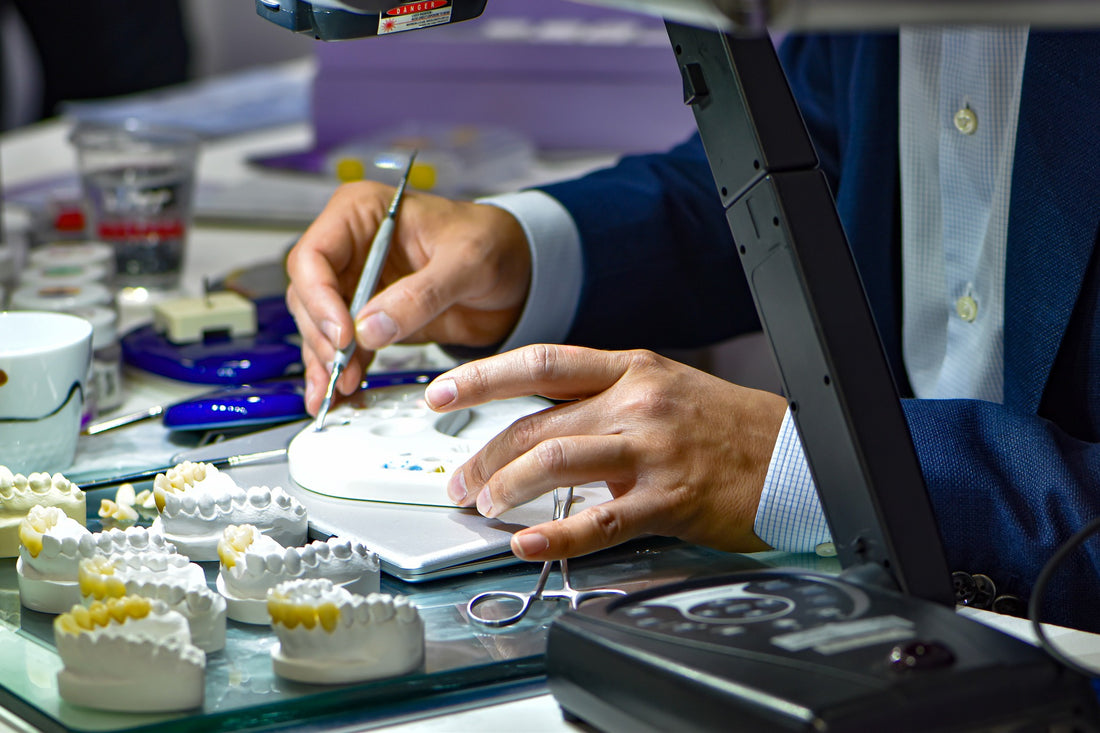
The evolution of Aligners: technology, history, and the essence of thorough cleaning
Share
The development of aligner trays for orthodontic treatment represents a significant advancement in orthodontics. These innovative devices have not only revolutionized the aesthetics of braces but also transformed how patients experience teeth straightening. The following detailed article delves into the history, technology, and critical importance of proper care for aligner trays to maintain their optimal functionality.
Historical Background and Technological Evolution
The journey of aligner technology began in the late 1990s. The initial concept of clear dental trays enabling invisible corrections was introduced by Dr. William M. Simon. However, it was Align Technology, founded by Zia Chishti and Kelsey Wirth in 1997, that brought this vision to life. Their groundbreaking product, Invisalign®, marked a true revolution in orthodontics and set new standards for treatment alternatives.
The idea behind aligner trays is remarkably straightforward: they replace traditional brackets and wires with a series of custom-made, transparent trays used progressively to correct teeth alignment. Each tray is a precisely crafted model designed to move teeth gradually into the desired position. This approach offers not only aesthetic advantages but also exceptional comfort, as the trays are removable and less disruptive to daily life.
The Underlying Technology
The technology employed in aligner trays is both impressive and highly sophisticated. It begins with creating a detailed 3D model of the patient’s teeth, achieved through digital scans that provide an accurate representation of the dental structure. These models form the foundation for the entire treatment plan.
Orthodontists use these digital data points to create a comprehensive treatment plan simulating the step-by-step movement of teeth. Advanced software visualizes the exact movements over the course of treatment. The resulting aligners are crafted from a specialized plastic material known for its transparency and durability.
Each set of aligners is designed to represent the next step in teeth alignment, requiring patients to switch trays every few weeks. This incremental adjustment is essential for achieving the desired results while precisely controlling tooth movements.
The Necessity of Proper Cleaning
The introduction of aligner trays brought not only technological innovations but also new challenges in oral hygiene. While aligners are discreet and comfortable, they require special care to maintain their functionality and hygiene. Proper cleaning is critical, as inadequate care can lead to serious issues.
One of the main reasons regular cleaning is so vital is the buildup of plaque and bacteria. Aligners are in constant contact with saliva, food particles, and beverages, making them ideal breeding grounds for harmful microorganisms. Without regular cleaning, plaque and bacteria can accumulate, potentially causing cavities, gum inflammation, and bad breath.
Additionally, poorly maintained aligners may develop stains that compromise their transparency. Thorough cleaning helps prevent discoloration, ensuring the aligners remain discreet. Furthermore, insufficient cleaning may lead to fit and functionality issues, jeopardizing treatment efficacy.
The Role of Ultrasonic Cleaners
Modern oral hygiene offers various methods for cleaning aligner trays, but ultrasonic cleaners have emerged as particularly effective. These devices use high-frequency sound waves to dislodge dirt and debris from the trays' surfaces. The process is both thorough and gentle.
Ultrasonic cleaners operate by generating sound waves that create tiny bubbles in a cleaning solution. These bubbles implode, effectively removing debris and buildup from the aligners. This method is exceptionally effective, as it reaches even the smallest crevices and hard-to-access areas often missed during manual cleaning.
Another advantage of ultrasonic cleaning is its gentle approach to the aligners' material. Unlike abrasive cleaning agents or mechanical methods that could damage the aligners, ultrasonic cleaning preserves their integrity. This is crucial, as any damage to the trays could compromise their fit and the overall treatment outcome.
In addition to thorough cleaning, ultrasonic cleaners offer a quick and efficient solution for daily aligner maintenance. In just a few minutes, aligners can be completely cleaned, significantly reducing the effort required while ensuring optimal oral hygiene.
Conclusion
Aligner trays for teeth straightening represent a significant leap forward in orthodontic treatment. Their development has made orthodontics more comfortable and aesthetically pleasing for many patients. However, this innovation comes with the need for meticulous and regular cleaning to maintain the trays’ pristine condition and effectiveness.
The technology behind aligner trays is both fascinating and complex, and proper care is crucial for achieving the desired results. Ultrasonic cleaners provide an especially effective and gentle method for cleaning trays, making them an indispensable tool for patients seeking to maximize their treatment's benefits. Consistent aligner care is key to a successful and comfortable treatment experience and long-term oral health.
